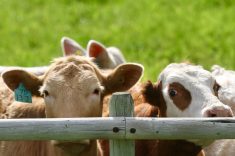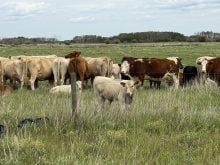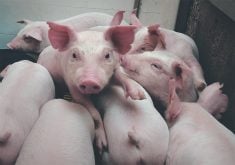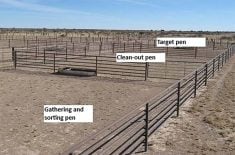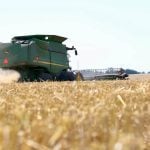LACOMBE, Alta. – The goal of every cattle producer is for each cow to wean a live, healthy calf every 12 months, but an array of diseases can get in the way.
Each cycle of a cow’s life from prebreeding, breeding, preweaning, weaning and precalving requires different nutrition and management adjustments.
Among the important management decisions is a herd vaccination program prepared with a local veterinarian, said Pete Knight, a veterinarian with Pfizer Health based at Red Deer.
“You need to work with your local veterinarian to work out a protocol that fits your operation,” he told a cattle producer’s seminar near Lacombe.
Read Also
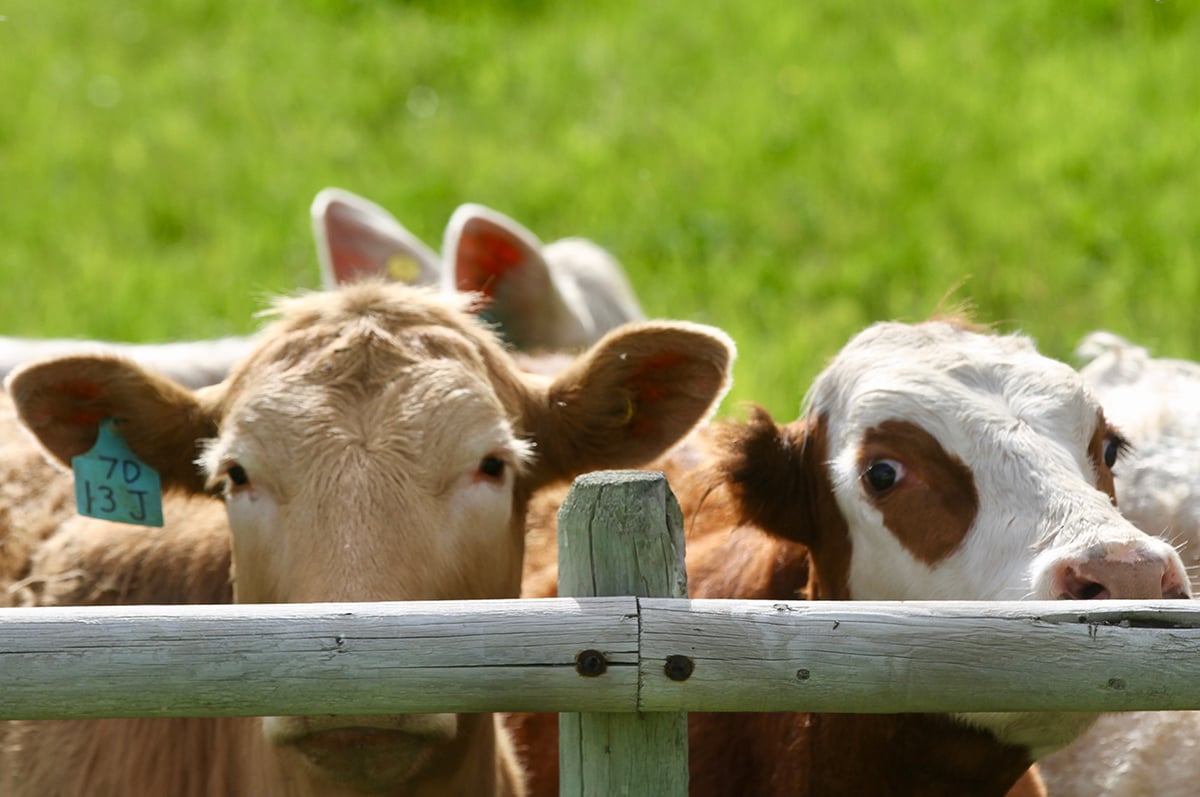
Feeder market consolidates at historic highs
For the week ending Sept. 6, Western Canadian feeder cattle markets were relatively unchanged compared to seven days earlier.
He categorizes breeding problems under the umbrella of empty cow disease when a cow does not conceive, aborts, has an early embryonic death or delivers a stillborn.
“There are some infectious agents that can cause that,” he said.
Vibriosis and trichomoniasis are venereal diseases that affect the female during the breeding season. There is no conception or the cow is a late breeder.
Leptosporosis is a bacterial disease that delays conception or causes mid to late abortion. It is not a big problem in Western Canada but there are pockets of the country where cattle should be vaccinated.
Two major viruses with a huge impact on a herd are infectious bovine rhinotracheitis, or IBR, and bovine virus diarrhea, or BVD.
IBR causes respiratory disease in younger stock like weaned calves. It can also have reproductive consequences on a herd that is not vaccinated. It is the leading cause of abortion today, and pregnant cows can abort with no other signs of disease.
Cows exposed to it during the breeding season may have a fetus fail to implant on the uterine wall.
The producer assumes the cow is pregnant and then a couple of months later it starts to cycle again. The fetus may have been small so the abortion is not noticed.
It could also cause mummified fetuses or weak calves.
“The most infamous statement is, ‘I don’t vaccinate for IBR because I have a closed herd.’ There is no such thing as a closed herd in Canada,” Knight said.
The disease may be spread when new cattle like feeders carrying the infection are introduced and located close to the cow herd during midterm pregnancy.
“If you ever want to cause an IBR abortion storm, this is how to do it,” he said.
Once they start aborting, it is too late.
“IBR virus is one thing we really need to have our cow herd protected against.”
BVD is a growing concern for feedlots in the last 10 years because many calves are entering the pens persistently shedding the virus and infecting other cattle. Once a feedlot calf gets it, there is nothing to be done.
If a cow is infected within the first six months of pregnancy, the fetus may abort. If exposure occurs between 40 to 140 days of pregnancy, the virus circulates and the fetus may incorporate it as part of its own system because it does not recognize it as a foreign body. The calf may be born and appear normal but will be persistently infected. Most die before they reach two years of age.
Persistently infected calves pass the virus every day through tears, saliva, urine, manure and semen.
The disease suppresses the animal’s immune system making it susceptible to anything it comes in contact with like respiratory infection including pneumonia.
Control of the disease falls back on the cow-calf producer and if a feedlot finds out where the infected animal was from, it will not do business again with that farm.
“We have to block the disease in the cow before she is ever bred if we want to do anything about BVD,” Knight said.
There are 200 different strains of BVD circulating but standard vaccines are still effective.
Calves vaccinated on the farm before they go to the feedlot are better off. The ideal time to vaccinate the cow is before breeding.
Annual vaccinations are recommended with the highest level of protection sought at 40 to 140 days of pregnancy.
Skin tests are available by taking a notch from the ear to see if animals are infected. It takes 10-14 days to get results and some feedlots are testing. The infected ones are separated from the healthy cattle.



